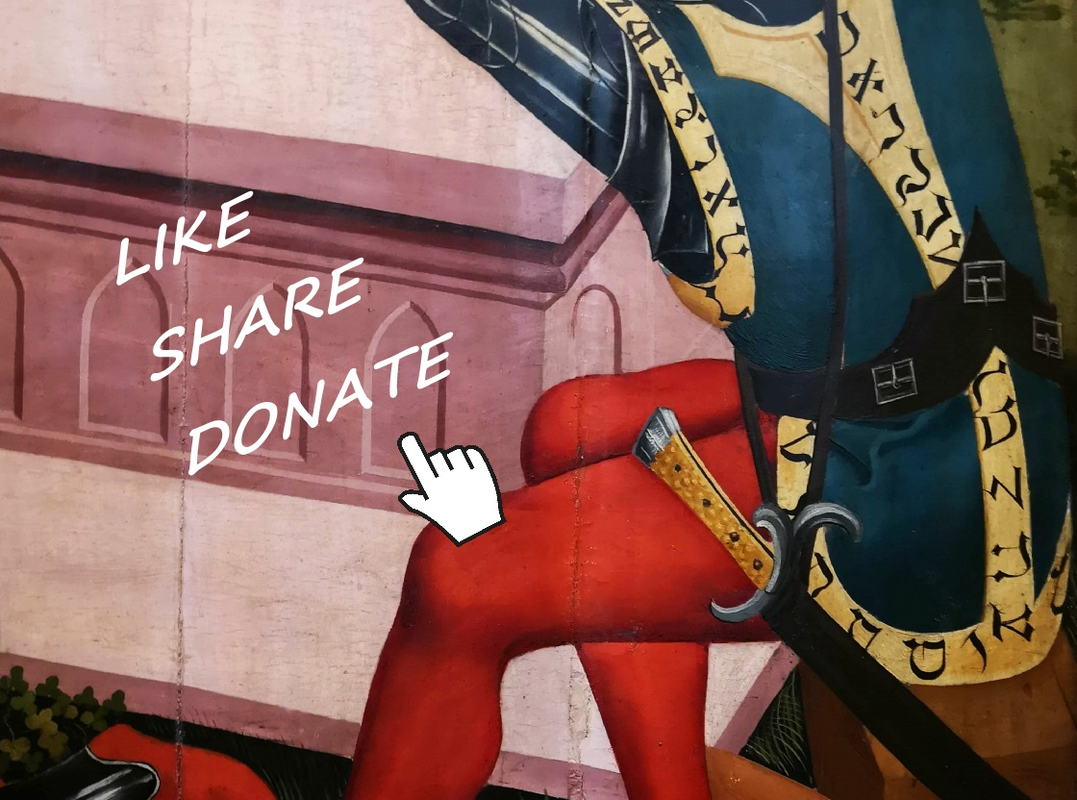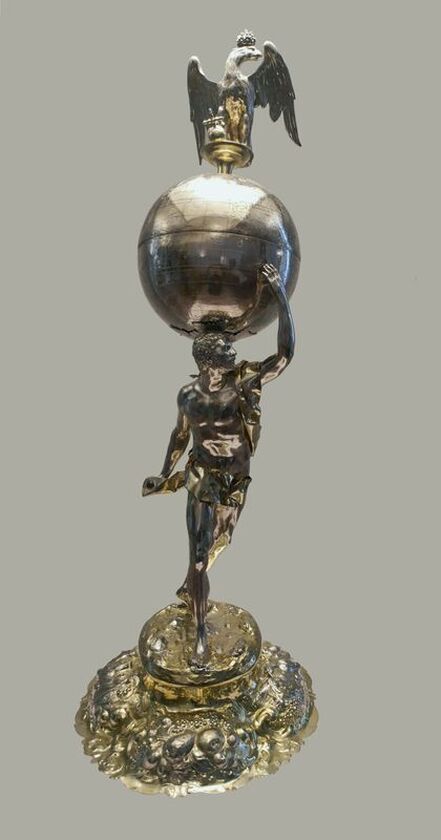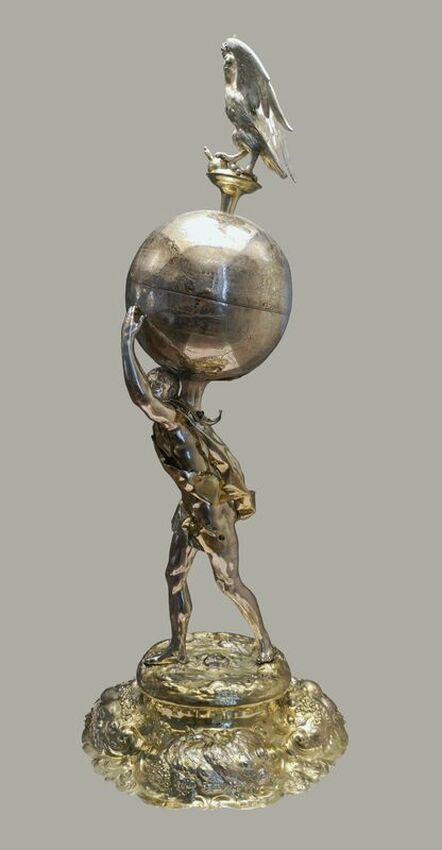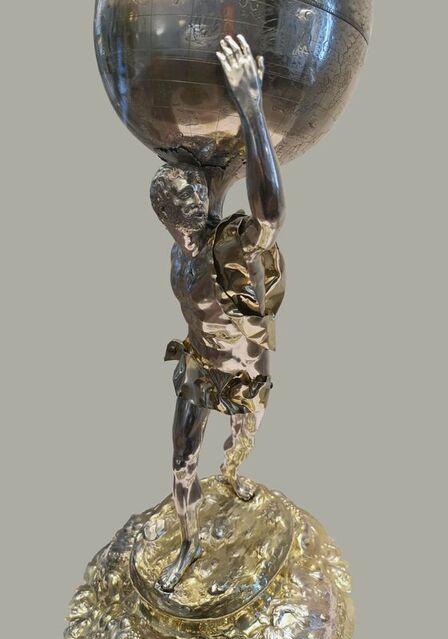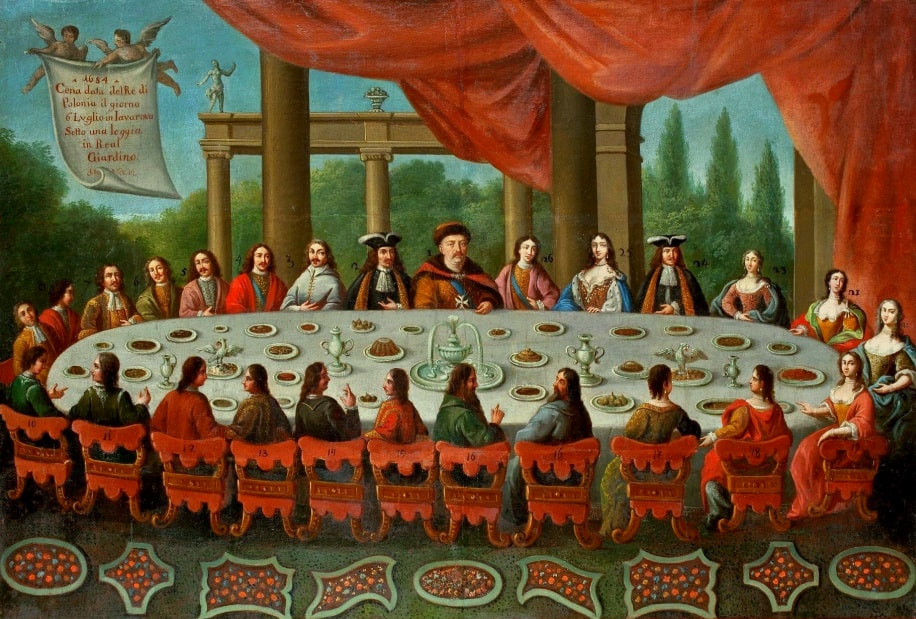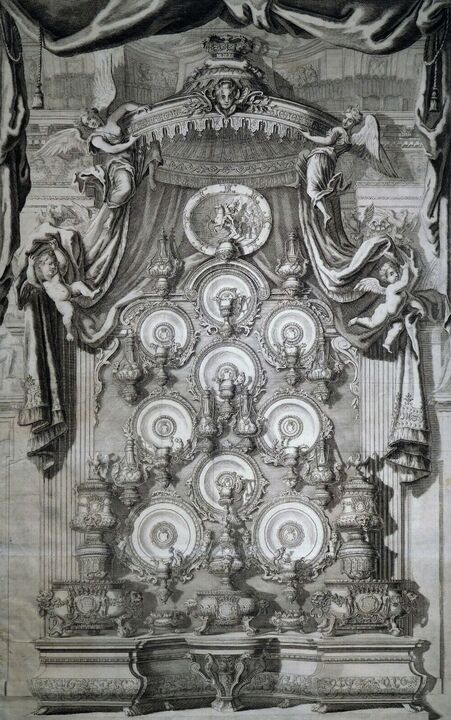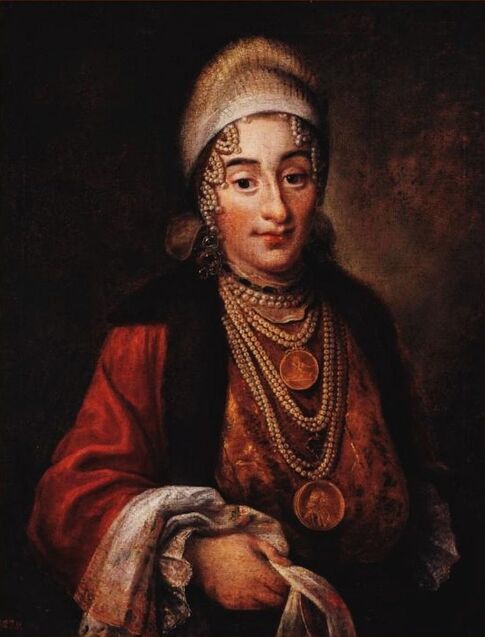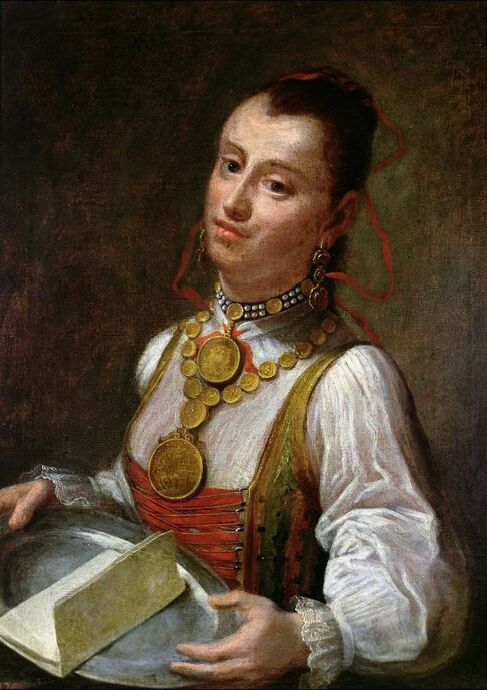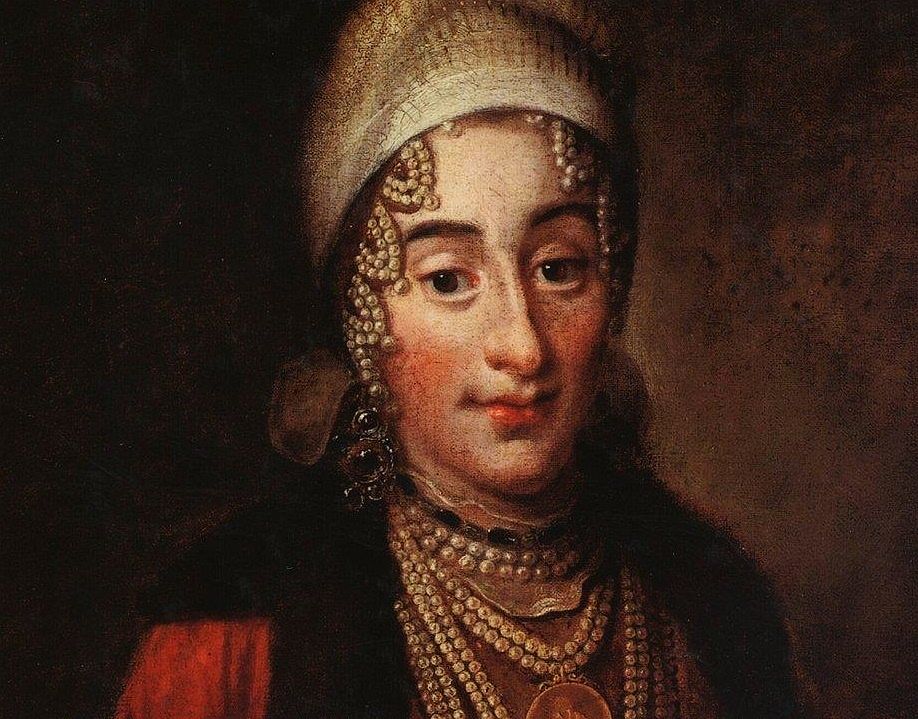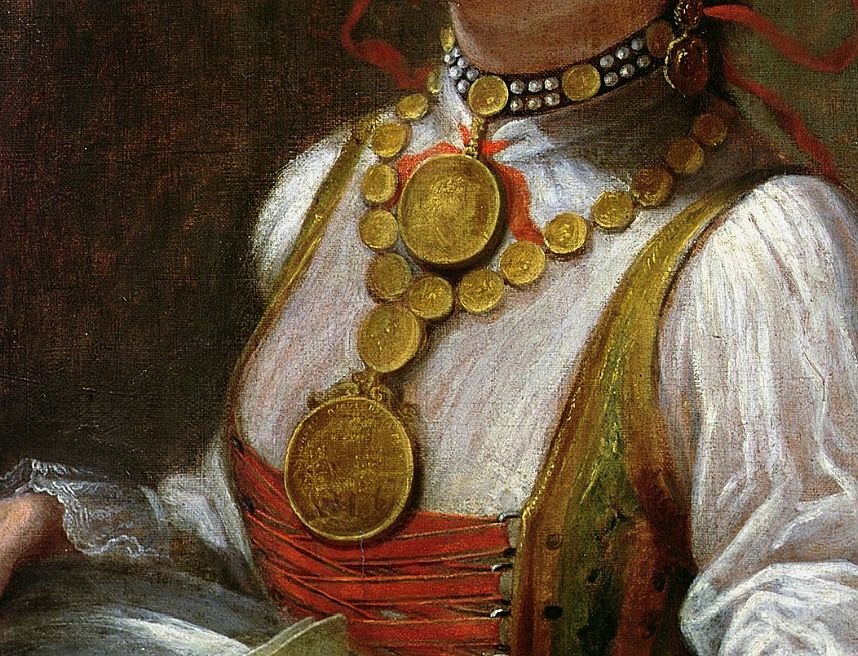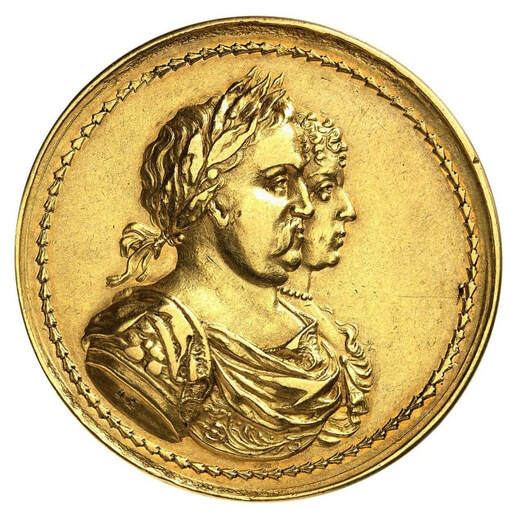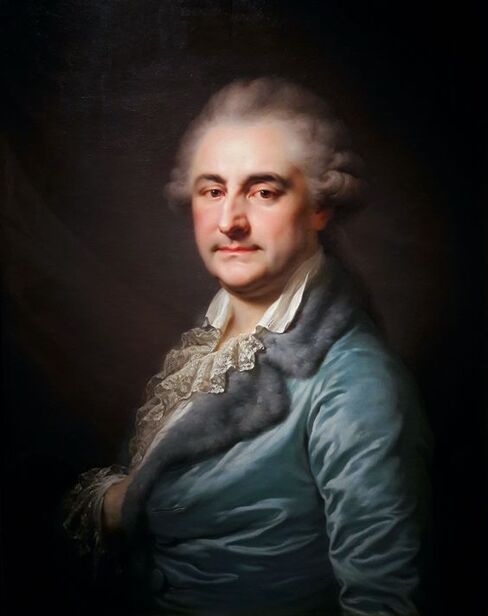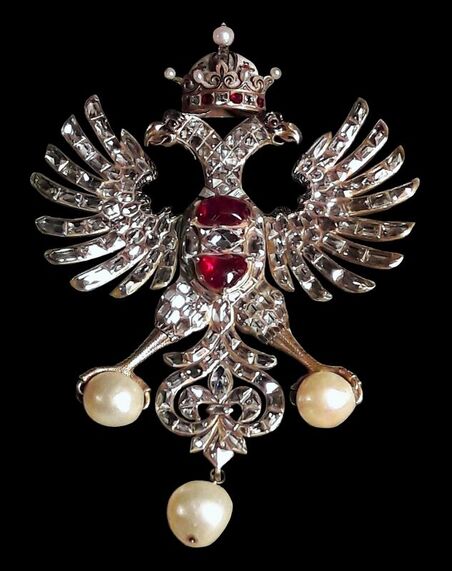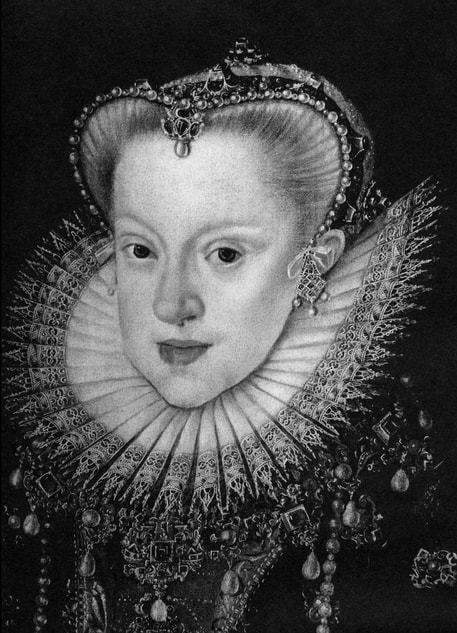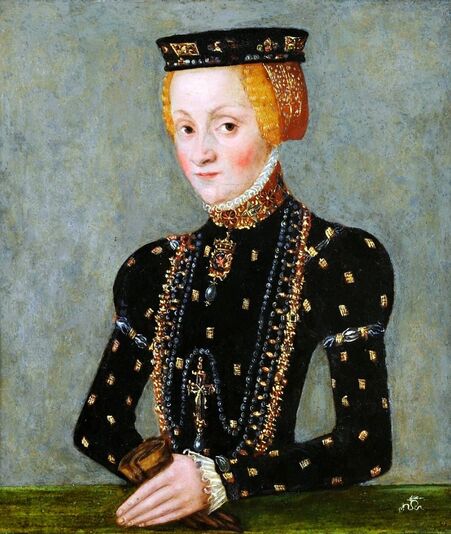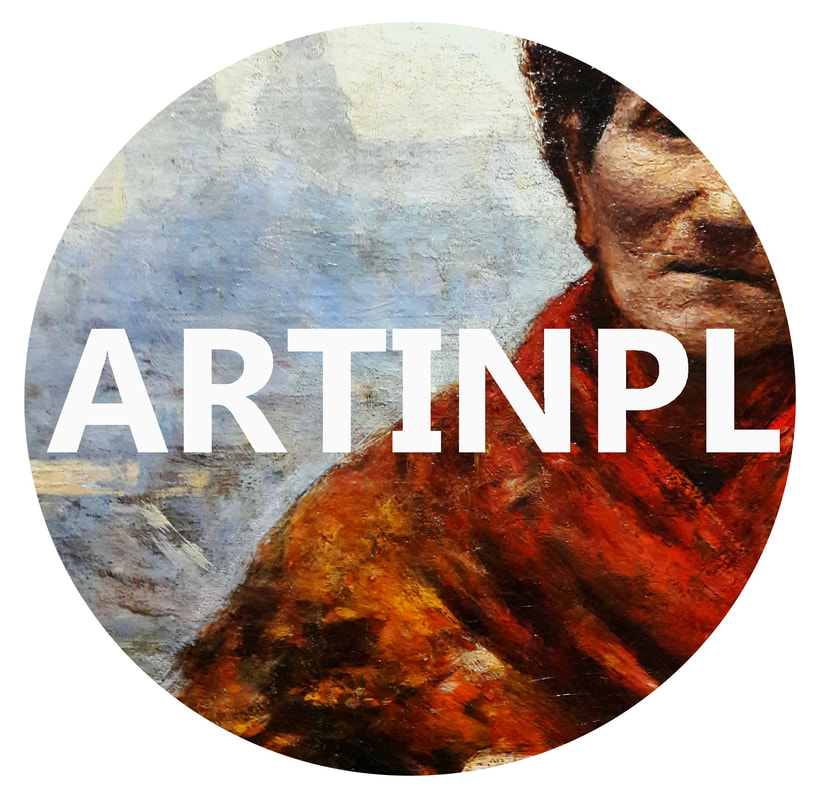|
On June 17th, 1696 died in the Wilanów Palace in Warsaw after 20 years reign, John III Sobieski, elected monarch of the Polish-Lithuanian Commonwealth. Shortly after king’s death an inventory of his belongings in the palace was opened. The document contains 122 positions of exquisite silverware, some of which could be created for 20th anniversary of king’s coronation on February 20th, 1696. In the part of royal treasury supervised by burgrave Brochocki, there was "a silver pyramid with 11 baskets made in Augsburg (No. 9.)", "a silver bowl made in Augsburg with a cover with phoenix (No. 4.)", "a three storey fountain with gilded elements made in Augsburg (No. 8.)" and "partially gilded service made in Augsburg with salt cellars, trays, vinegar cruets, bowls and Hercules in the center (No. 7.)". According to inventory the latter service had total weight of 56 grzywnas and 12 łuty, while the Kraków grzywna, used in Poland after 1650 weighed 201.86 g, therefore total weight of the service was approximately 11,304.16 g. Similar vessel from the Green Vault in Dresden (inventory number IV 292), created in 1617 in Nuremberg by Heinrich Mack and Johann Hauer, meaure 75 cm with 4686 g weight.
The inventory also lists some gifts from foreign monarchs including gold bowl offered by Elector of Brandenburg (till 1657 a fief of the Commonwealth as Duke of Prussia) - “gold bowl in the shape of a shell presented by Elector of Brandenburg with his coat of arms” 894 red zlotys worth, inherited by prince Aleksander Benedykt Sobieski. On March 24th, 1712 arrived to Berlin, a capital of newly created Kingdom of Prussia (earlier Brandenburg), an envoy of the Polish-Lithuanian Commonwealth and Saxony, count Jacob Heinrich von Flemming. His mission was to negotiate alliance against Sweden (diplomatic credentials for Flemming, Dresden March 17, 1712 [O. S. A. Rep. XI: 247 ii Fe. 55]). Both Prussia and Sweden, growing military powers in the region, pose a significant threat to the Commonwealth. Prussia claimed Courland, a vassal Duchy of the Commonwealth, Varmia and Elbląg, while Swedes were even more perilous for elected successor of John III Sobieski, Augustus II the Saxon, called the Strong, as they supported Stanislaus Leszczyński, a candidate to Commonwealth’s crown and Augustus’ rival. The king was prepared to make far-going territorial concessions to alleviate Prussia and the envoy undoubtedly has not arrived barehanded. It is possible then that Augustus has sent from Warsaw a part or whole silver service made for Sobieski, as a gift. Table centerpiece with Hercules carrying the terrestrial globe and royal eagle in the Köpenick Palace, a branch of Museum of Decorative Arts in Berlin (inventory number S 559), is probably the largest and the only preserved part of the mentioned service. It measures 80 cm and bears hallmark of the city of Augsburg as well as master mark LB with a star. Stylistically the work should be attributed to Lorenz II Biller (active between 1678-1726) and dated to 1680s. The work was signed in the center of the celestial globe in Latin: Christoph Schmidt fecit Augustae 1696. Schmidt most probably modified the work by Biller’s workshop, acquired by some important patron that year, John III Sobieski. The statue also bears the date: 17 M 12 [March 1712?] at the bottom of the base on the right, possibly an inventory date. Later the centerpiece was included in the so-called great silver buffet in the Berlin City Castle. Two similar vessels are visible in the drawing from the end of the 18th century, depicting the composition of the silver buffet in about 1763 and are not visible in original composition of the buffet by Johann Friedrich Eosander from 1708. The centerpiece was therefore included in the composition between 1708 and 1763, which makes Polish provenience even more accurate.
Table centerpiece with Hercules carrying the terrestrial globe and royal eagle by Lorenz Biller II and Christoph Schmidt in Augsburg, ca. 1685 and 1696, Museum of Decorative Arts in Berlin.
Fragment of table centerpiece with Hercules carrying the terrestrial globe and royal eagle by Lorenz Biller II and Christoph Schmidt in Augsburg, ca. 1685 and 1696, Museum of Decorative Arts in Berlin.
Banquet given by John III Sobieski to foreign diplomats and Polish dignitaries at Jaworów on 6 July 1684 by Frans Geffels, ca. 1685, National Museum in Wrocław.
Silver buffet in the Berlin City Castle by Martin Engelbrecht, circa 1708, engraving published in Theatrum Europaeum, Volume XVI, 1717, private collection.
See the work in Polish-Lithuanian Treasures.
On November 11th, 1781 king Stanislaus Augustus Poniatowski (1732-1798), the last elected monarch of the Polish-Lithuanian Commonwealth, entered triumphally the city of Kamianets-Podilskyi, at that time part of the Polish south-eastern borderlands protection system, accompanied by prince Adam Czartoryski and voivode Józef Stępkowski. The king was greeted by general Jan de Witte, commander of the fortress.
Stanislaus Augustus arrived to Volhynia and Podolia to meet crown prince Paul of Russia (1754-1801) and his wife Natalia Alexeievna (1755-1776) who were traveling incognito as the comte et comtesse du Nord (the Count and Countess of the North) through western Europe and took this opportunity to inspect the most important fortresses. During his five-day sojourn in Kamianets the king visited the churches and the old fortress, as well as nearby Zhvanets and Khotyn. One of the most important souvenir of this travel are two portraits from the collection of the National Museum in Warsaw of two Jewish women from Zhvanets. According to inscription in Polish on both of them they were commissioned by the king on November 14th, 1781 and painted by Krzysztof Radziwiłłowski - Roku 1781 dnia 14 listopada z rozkazu Najjaśniejszego pana Króla J Mości, zwiedzajacego brzegi Dniestru w Żwańcu, przedstawiona Chajka Córka kupca Abramka Lwowskim zwanego, tym portretem odmalowana przez urodzonego Krzysztofa Radziwiłłowskiego. The inscription gives the name of one of the women - Chajka (Polish spelling Hayka), the daughter of the merchant Abramek Lwowski (of Lviv). Both portraits were included in the royal collection in Warsaw as Portrait of Jewish woman Czayka (Portrait de la juive Czayka) and Portrait of Jewish woman Elia (Portrait de la juive Elia). Splendid half-length portraits of two women, one married having her hair covered and one unmarried, most probably mother and daughter, rank among the oldest preserved effigies of Jewish people from the territory of the former Polish-Lithuanian Commonwealth. King’s romantic affection towards one or both women is sometimes cited as reason for creation of portraits, however there is no clear evidence of this. Although Stanislaus Augustus was famous for his short-lived romances and his chamberlain’s palace in Warsaw, the notorious Rabbit-House (Królikarnia), was described as “high-class brothel” where the king was entertained by the most beautiful women, it is also possible that he was impressed by both women or their attire, thus wanted to preserve this impression. The women wore their best clothes and jewels for so historic an occasion as king’s visit in their town. The amount of rare gold medals, pearls and other jewels, quite out of fashion at that time, worn by them was unusual for visitors from cosmopolitan capital of the Commonwealth at the end of Enlightenment. The younger woman wears a necklace made entirely of large gold medals and coins, one of which is most probably gold coronation medal of John III Sobieski and Marie Casimire from 1676 and gold earrings, while the older wears four pearl necklaces with two large gold medals, diamond earrings, diamond necklace and a bonnet adorned with pearls. Both portraits constitute an unprecedented document of great prosperity of the Jewish community in the Commonwealth shortly before it was finally dismantled by the Second and Third Partition (1793-1795).
Portrait of Chajka, Jewish woman from Zhvanets by Krzysztof Radziwiłłowski, 1781, National Museum in Warsaw.
Portrait of Elia, Jewish woman from Zhvanets by Krzysztof Radziwiłłowski, 1781, National Museum in Warsaw.
Detail of portrait of Chajka, Jewish woman from Zhvanets by Krzysztof Radziwiłłowski, 1781, National Museum in Warsaw.
Detail of portrait of Elia, Jewish woman from Zhvanets by Krzysztof Radziwiłłowski, 1781, National Museum in Warsaw. Depicted with, most likely, gold coronation medal of John III Sobieski and Marie Casimire on her necklace. Identification by Marcin Latka.
Gold coronation medal of 15 ducats worth of John III Sobieski and Marie Casimire by Johann Höhn, 1676, Private collection.
Portrait of Stanislaus Augustus Poniatowski in dressing gown by Giovanni Battista Lampi, 1788-1789, National Museum in Warsaw.
At the beginning of January 1606 arrived to Kraków Jan Buczynski, secretary of tsar False Dmitry I of Russia, with the mission to acquire jewels for his patron. Several merchants from Kraków and Lviv, as well as jewellers Mikołaj Siedmiradzki and Giovanni Ambrogio Cellari from Milan, encouraged by the prospect of a large gain, embarked on a journey to Moscow.
Princess Anna Vasa (1568-1625) who owned a collection of jewels valued by some at 200,000 thalers, decided also to secretly sell to the tsar a part of it. Stanisław Niemojewski (ca. 1560-1620) of Rola coat of arms, Crown Deputy Master of the Pantry, was appointed to deliver jewels worth of 70,000 zlotys "wrapped in colourful silk" in an iron casked "painted in green". False Dmitry was killed on May 17th, 1606 and it was not as early as 1609 when the collection was returned by the new tsar Vasiliy Ivanovich Shuisky. Among jewels returned was "eagle with two diamond heads with rubies", most probably from princess' collection or pawned with Niemojewski from the State Treasury before 1599. Such hereldic jewels, either Imperial-Austrian or Polish, were undobtedly in possesion of different queens and princesses of Poland since at least 1543, when Elizabeth of Austria (1526-1545) was presented with a "diamond eagle with rubies" by emperor Charles V on the occasion of her marriage with king Sigismund II Augustus of Poland. Inventory of the jewels of Polish princess Anna Catherine Constance Vasa, daughter of Sigismund III and Constance of Austria, include four pendans and two pair of earrings with eagles, unfailingly three Imperial-Austrian and two Polish: "a pendant with a white, enamelled Eagle, at which seven diamonds, three round pearls and one big hanging ", valued at 120 thalers and "a diamond eagle with a sharply cut diamond in the center, more diamonds around and three hanging pearls". Anna Vasa, in half a princess of Poland, as a daughter of Catherine Jagiellon and sister of king Sigismund III, was as such entitled to use this emblem. After Sigismund's defeat at the Battle of Stångebro in 1598, she left Sweden to live with him in Poland where she spent the rest of her life. The miniature portrait of a lady with eagle pendant from Harrach collection in Vienna (Harrach Palace at Freyung Street) previously identified as effigy of Anna of Austria (1573-1598), first wife of king Sigismund III, basing on strong resemblance to portrait of Catherine Jagiellon, if at all connected with Poland, should be rather identified as a portrait of king’s sister Anna Vasa, and not as his wife. The lack of protruding lip, notorious "Habsburg jaw" known from Anna of Austria’s preserved portraits and costume of the sitter, according to Northern fashion and not Spanish of the Imperial court, confirms this hypothesis. Eagle was a symbol of supreme imperial power, epitomized magnanimity, the Ascension to heaven and regeneration by baptism and was used in jewellery all across Europe at that time. If the pendant is a heraldic symbol than the portrait should be dated to about 1592, when Sigismund was prepared to abandon the Polish throne for Ernest of Austria, who was about to marry princess Anna Vasa (this would also explain how the miniature found its way to Austria) or to 1598, when the princess needed to legitimize herself in her new homeland.
Diamond double-headed eagle of the House of Austria by Anonymous from Milan or Vienna, mid-16th century, Treasury of the Munich Residence. Most probably from dowry of princess Anna Catherine Constance Vasa.
Detail of a portrait of queen Anna of Austria (1573-1598) by Martin Kober, 1595, Bavarian State Painting Collections.
Miniature of princess Catherine Jagiellon (1526-1583) by workshop of Lucas Cranach the Younger, ca. 1553, Czartoryski Museum.
Miniature of a lady with eagle pendant, most probably princess Anna Vasa (1568-1625) by Anonymous, 1590s, Harrach collection in Rohrau Castle (?). Identification by Marcin Latka.
See the work in Polish-Lithuanian Treasures.
|
Artinpl is individual, educational project to share knowledge about works of art nowadays and in the past in Poland.
If you like this project, please support it with any amount so it could develop. © Marcin Latka Categories
All
Archives
April 2023
|
